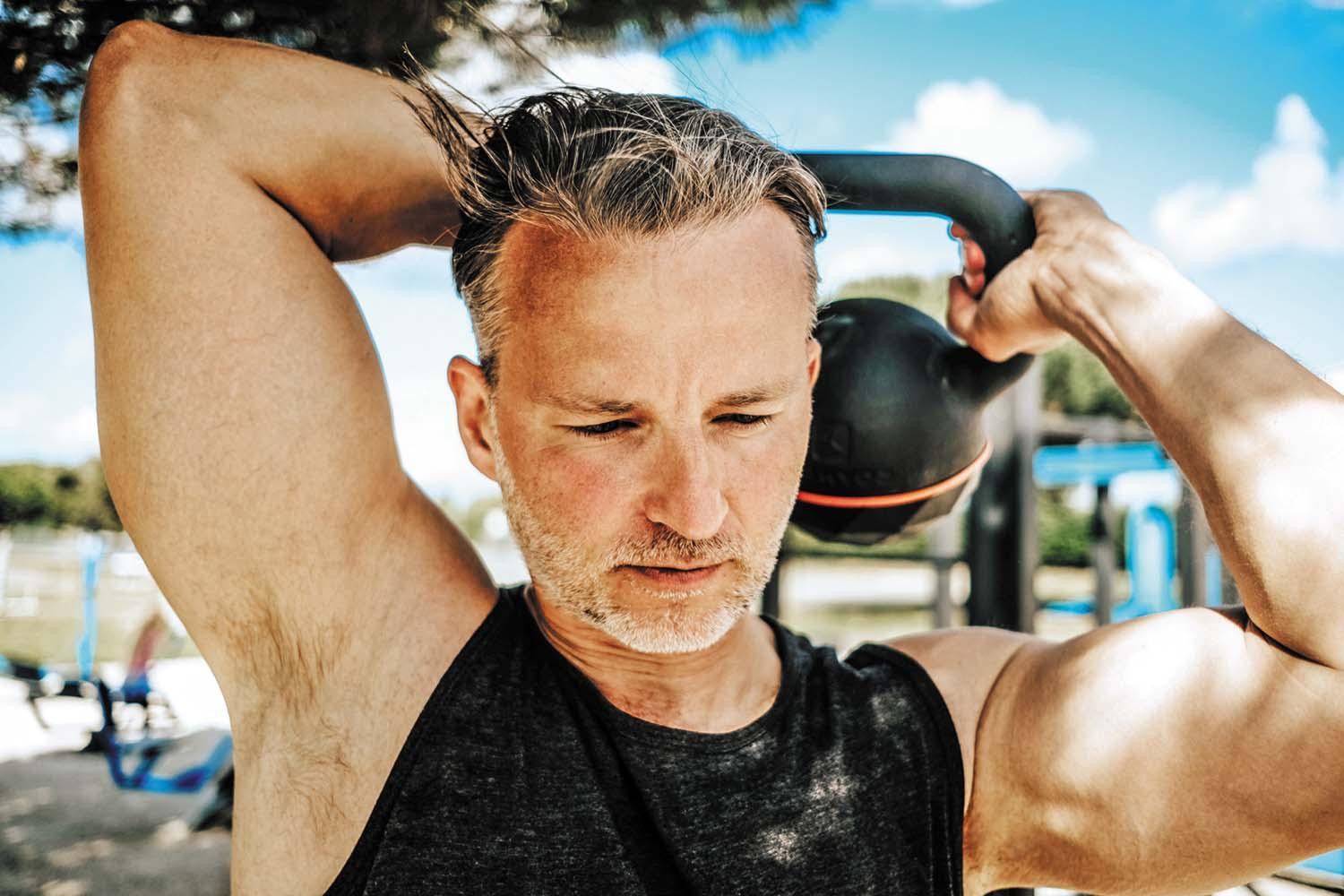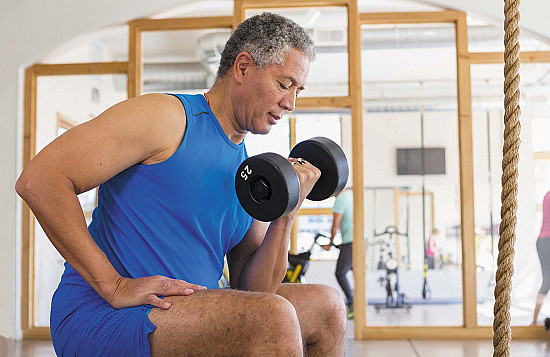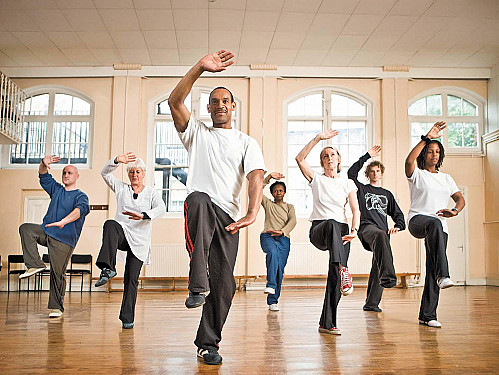Coming full circle
Halos are an excellent exercise for improving shoulder mobility and strength.
- Reviewed by Howard E. LeWine, MD, Chief Medical Editor, Harvard Health Publishing; Editorial Advisory Board Member, Harvard Health Publishing

Strong and flexible shoulders help you safely reach overhead, carry heavy items, and enjoy such sports as golf, tennis, and pickleball. But we don’t always give our shoulders the attention they need.
“Shoulder mobility and strength are use-it-or-lose-it skills,” says Eric L’Italien, a physical therapist with Harvard-affiliated Spaulding Rehabilitation. “Men tend to focus on other muscle areas and joints, but your shoulders carry much responsibility, and we often don’t value their importance until problems arise.”
Working muscles and spine
There are many exercises for improving shoulder mobility and strength, but among the best are halos, as they offer multiple benefits. Holding a kettlebell, dumbbell, weight plate, or even a heavy book with both hands, you rotate the weight around your head in a circular motion, as if drawing a halo over your head.
The halo simultaneously targets the shoulder and supports the upper back (the deltoid, trapezius, and rhomboid muscles), as well as engages the forearms and core as you move through the range of motion.
Halos are also good for improving thoracic spine mobility. Your thoracic spine is the middle section of your spine, beginning at the base of your neck and ending at the bottom of your ribcage. Thoracic spine mobility plays a significant role in maintaining a healthy, upright posture.
“Immobility in this area can result in stiffness, neck or lower back pain, decreased range of motion, and poor posture,” says L’Italien.
Here’s how to assess your thoracic spine mobility. Stand in your normal posture and raise one straight arm as high as possible. Now repeat the movement while standing with your back against a wall. “If you have a slumping posture, you won’t be able to raise your arm as high as when standing against the wall,” says L’Italien.
Get a handle on halos
While you can use any kind of weight to perform halos, L’Italien prefers the kettlebell. “It’s often easier and more comfortable to hold because of its handle, and its narrow shape makes it easier to move behind the head,” he says. “But use whatever works best for you, especially if you have a weak grip or suffer from arthritis.” L’Italien also recommends beginning with a five- to 10-pound weight, performing 10 rotations (five clockwise and five counterclockwise), and then waiting a day to see how your shoulders feel.
“You always want to be careful with shoulders, so it’s best to ease into halos,” he says.
If you feel okay after this test, do 10 rotations in each direction to complete one set and perform two or three sets, resting in between. “As you progress, gradually increase the weight,” says L’Italien.
How to perform halos
|
Take a stance
Besides the standard stance (see “How to perform halos”), there are other stances you can take when doing halos: sitting, standing in a split stance (like in a mini-lunge position), or kneeling on one or two knees.
“Sitting is the easiest for beginners, but as you become more comfortable, performing halos while kneeling can better engage the core,” says L’Italien.
Halos can be incorporated into your regular exercise routine or used as an upper-body warm-up before workouts. Before doing halos, consult your doctor if you’ve had shoulder problems, a previous injury, a shoulder replacement, or any upper back or neck issues.
This article is brought to you by Harvard Health Online+, the trusted subscription service from Harvard Medical School. Subscribers enjoy unlimited access to our entire website, including exclusive content, tools, and features available only to members. If you're already a subscriber, you can access your library here.
Image: © Guido Mieth/Getty Images
About the Author

Matthew Solan, Executive Editor, Harvard Men's Health Watch
About the Reviewer

Howard E. LeWine, MD, Chief Medical Editor, Harvard Health Publishing; Editorial Advisory Board Member, Harvard Health Publishing
Disclaimer:
As a service to our readers, Harvard Health Publishing provides access to our library of archived content. Please note the date of last review or update on all articles.
No content on this site, regardless of date, should ever be used as a substitute for direct medical advice from your doctor or other qualified clinician.
















